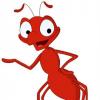Hi everyone!
I recently got a culture of wingless fruit flies, and I've noticed that there are some variants.
Because I'm interested in them, I'm going to try isolating some of these variants.
I've noticed that some have really bright eyes, instead of the brick red ones that are normal. I think this is the orange-eyed variant.
I've also noticed that some get knocked out much faster by cold than others, and stay out for longer, seemingly independent of their body size.
Also, there is a pretty decent size range in the females. Some are almost 1/2 mm longer!
Some have smaller eyes as well and others have a dark splotch on the thorax.
I'm going to try isolating these strains. I'm really interested in breeding bigger fruit flies that get knocked out by cold pretty easily for feeding.
I'm going to use a pretty standard culture medium of 1:2:4 white sugar:powdered milk:instant potatoes.
I'll post my progress towards isolating these and maybe other variants on this thread.
Edited by cpman, July 1 2015 - 3:12 PM.





















